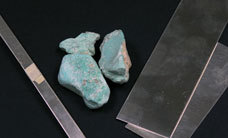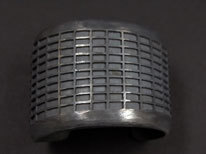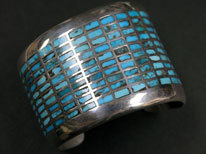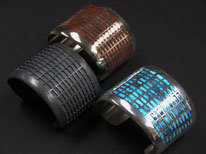Tobe Turpen Jr. changed the style of trading business his father started in the early 1900s. Instead of providing dry goods and being involved with the wool trade Tobe decided to go a different direction. He wanted his trading company to promote the beautiful crafts being made by the surrounding Gallup area artists.
Gallup, New Mexico is perfectly located for tourist trade. Especially before the four lane freeways took everyone around town. Route 66 and the train brought many people through this town, the Indian Capital of the World, and many of them shopped for a handmade piece of art to take back to California or the East.
In the early days of Native American handmade art the dealer spent lots of time educating the public about this style of art. Tobe talks about how earlier buyers didn’t put a big value on the art. Much of his time was talking about the quality of turquoise, how the piece was made, and the amount of time it took to make these unique and special pieces. Today that has all changed. Artists like Raymond Yazzie charge tens of thousands of dollars for bracelets.
However, once again it seems like we are doing lots of price justification in the Trading Post. One of the reasons that Native American made pieces of jewelry has a value is because of the materials. The majority of the pieces are made using sterling silver and some type of a stone. Plus, what we all like to be paid for, labor.
Tobe made a business of handmade art selling at a time when material costs were relatively low. We have all seen a pre-1965 dollar US coin, about 1 troy ounce, those were made with 90% silver and cost the Government less than one dollar to make. Tobe also dealt in a time when you saw excellent American turquoise for pennies a carat. Those days are over and it isn’t just because of inflation.
Things have changed radically in the last decade. During this time we have seen silver go from a little more than $4 dollars a troy ounce to a skyrocketing $48. It is important to remember that when you buy sterling silver that has been turned into sheet, wires, or the many other types silversmiths work with they pay an additional cost. Some types of wire can run as much as $40 dollars over the market price. Also, the days of good inexpensive turquoise don’t exist either. It wasn’t that long ago (same last decade) you could walk into a supply house here in Gallup and buy a nice turquoise cab for around 25 cents a carat. Anything over 50 cents and you were really starting to buy something rare and collectible. Now it seems like everything is at least a dollar and if you want a nice piece of Arizona Kingman get ready to spend around $5 a carat.
A tighter materials market reduces the number of craftsmen in the trade, increases the base price of jewelry and typically demands a more savvy buyer. Unfortunately, the dramatic change in materials cost has in some cases tripled the prices of your favorite artists from merely a year ago. Look over our inventory, shop around, and know that Perry Null / Tobe Turpen Trading always creates from the finest materials, buys from the best names in the craft, and delivers a quality heirloom piece every time you shop.

Sterling silver sheet, sterling silver strips to build the channels, and rough turquoise used for the inlay.

Finished silver work before the inlay and buffing. This bracelet before stones already weighs over 4 ounces.

What it looks like once 140 pieces of turquoise have been inlaid and the silver has been shined.

All three of these pieces are handmade using fabricated sterling silver, this is not cast work. A bracelet like this takes time to make, something that you are not going to make in a day.
We have had this style of bracelet made over and over. Ten years ago we would have sold this bracelet for around $280, today this bracelet is $600. The things that have changed are material cost and labor cost. Many of our artists live a distance from town and are hit very hard with costs such as gas. Remember that this is a piece of handmade art, no shortcuts and no skimping on materials.